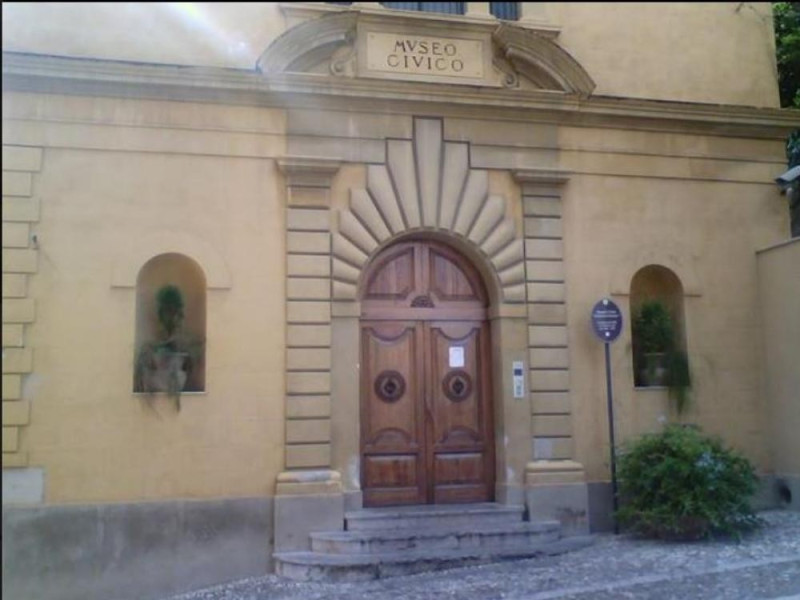Destinazioni - Comune
Termini Imerese
Where
Termini Imerese (Palermo)
Termini Imerese is a town and comune in the province of Palermo on the northern coast of Sicily, southern Italy.
History
Ancient
The site where the town now sits has been populated since prehistoric times, as many archeologial excavations have shown through the years. Nevertheless, it might be stated that its recorded history started in 409 BC when its more ancient neighbor, Himera (now completely within the comune's borders), was completely destroyed by the Carthaginian army under Hannibal Mago. Those who survived the devastation promptly repaired to a site then called "Thermae" - the name deriving from the hot springs - which is today known as Termini; and the ancients considered Thermae as a successor to Himera. The new town of Thermae or Therma, called for the sake of distinction Thermae Himerenses, which thus took the place of Himera, obviously derived its name from the hot springs for which it was celebrated, and the first discovery of which was connected by legends with the wanderings of Hercules. It appears to have early become a considerable town, though it continued, with few and brief exceptions, to be subject to the Carthaginian rule. In the First Punic War its name is repeatedly mentioned. Thus, in 260 BC, a body of Roman troops were encamped in the neighborhood, when they were attacked by Hamilcar, and defeated with heavy loss. Before the close of the war, Thermae itself was besieged and taken by the Romans. We have, however, no clue to the circumstances which led to the peculiar favor which this city seems to have received at the hands of its Roman conquerors. Cicero tells us that the Roman government restored to the Thermitani their city and territory, with the free use of their own laws, as a reward for their steady fidelity. As we see that they were on hostile terms with Rome during the First Punic War, it can only be to the subsequent period that these expressions apply; but the occasion to which they refer is unknown. In the time of Cicero, Thermae appears to have been a flourishing place, carrying on a considerable amount of trade, though the orator speaks, of it as oppidum non maximum. It seems to have received a colony in the time of Augustus, whence we find mention in inscriptions of the Ordo et Populus splendidissimae Coloniae Augustae Himeraeorum Thermitanorum: and there can be very little doubt that the Thermae colonia of Pliny in reality refers to this town, though he evidently understood it to be Thermae Selinuntiae (modern Sciacca), as he places it on the south coast between Agrigentum (modern Agrigento) and Selinus There are little subsequent account of Thermae; but, as its name is found in Ptolemy and the Itineraries, it appears to have continued in existence throughout the period of the Roman Empire, and probably never ceased to be inhabited, as the modern town of Termini Imerese retains the ancient site as well as name.
The magnificence of the ancient city, and the taste of its citizens for the encouragement of art, are attested by Cicero, who calls it in primis Siciliae clarum et ornatum; and some evidence of it remained, even in the days of that orator, in the statues preserved by the Thermitani, to whom they had been restored by Scipio, after the conquest of Carthage.
Medieval and modern Termini
Following the fall of the Roman Empire, the city entered a period of decline. Termini continued to exist as a bishopric until the 12th century, though the list of bishops contains various gaps and uncertainties. Under Norman rule, the city was at first a royal city; it subsequently became one of 42 città demaniali, cities administered directly by the crown rather than local nobility. Above all, from the Middle Ages through the beginning of the 19th century, Termini served as a major center for the collection and shipping of grain and other foodstuffs stored and subjected to duty in a special government warehouse complex (the caricatore regio). The presence of the caricatore improved the fortunes of the city, turning it into one of the major ports of Sicily and strengthening its commercial relationships with the maritime republics of Genoa, Pisa, and Venice as well as the major Mediterranean ports (Marseille, Barcelona, etc.) and, during the 16th century, those of the Atlantic. Toward the end of the 18th century, Termini became the site of the Ereina Imerese branch of the Ereina di Palermo academy, followed soon thereafter by the establishment of the Accademia Euracea, later the Accademia Mediterranea Euracea. In the 19th century, however, the closing of the caricatore precipitated a profound economic crisis that lasted until the end of the 20th century, when artisanal and proto-industrial activity began to replace the traditional agricultural base of the city's economy. A period of population decline, linked primarily to emigration to the Americas, was balanced at the beginning of the 20th century by immigration from Agrigento, Messina, and Ragusa.
Between 1970 and 2011, Termini was home to a large Fiat automobile manufacturing facility, where small cars such as the 126, the original Panda, and the Punto have been manufactured. The plant was the sole assembly site for the second generation Lancia Ypsilon built between 2005 and 2011. In 2006 the plant celebrated its four millionth car produced.[1] At the end of 2011, Fiat sold the plant to Chinese car manufacturer Chery.
There is also a power station operated by Enel with a generation capacity of 454 MW.
Main sights
Temple of Victory (Himera)
Sister cities
Elk Grove Village, United States
Notes
References
This article incorporates text from a publication now in the public domain: Smith, William, ed. (1854–1857). "article name needed". Dictionary of Greek and Roman Geography. London: John Murray.
External links
"Termini Imerese". Encyclopædia Britannica (11th ed.). 1911.
Selected Civil Records

